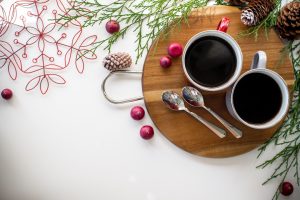
Bringing Luck and Prosperity with Traditional Chinese New Year Pictures: Exploring the Art of Traditional Chinese Decoration
Chinese New Year, also known as Spring Festival, is the most important traditional holiday in Chinese culture. It is a time for families to come together, celebrate, and wish each other good fortune for the coming year. One of the key elements of Chinese New Year decoration is the traditional Chinese New Year pictures. These pictures are not only beautiful works of art, but they also hold deep symbolism and meaning. In this article, we will explore the significance of Chinese New Year decoration in Chinese culture, as well as the symbolism, history, techniques, and themes behind Chinese New Year pictures.
Symbolism and Meaning in Chinese New Year Decoration
Chinese New Year decoration is filled with symbolism and meaning. Each element used in the decoration carries a specific message or wish for the new year. For example, the color red is considered auspicious and symbolizes good luck and happiness. It is believed that hanging red decorations during Chinese New Year will ward off evil spirits and bring good fortune to the household.
Other common symbols used in Chinese New Year decoration include the Chinese character “福” (fú), which means “blessing” or “good fortune”, and the image of a fish, which represents abundance and prosperity. The peony flower symbolizes wealth and honor, while the peach symbolizes longevity. These symbols are often depicted in Chinese New Year pictures to convey wishes for a prosperous and successful year ahead.
The History and Evolution of Chinese New Year Pictures
The tradition of Chinese New Year pictures dates back thousands of years. It originated during the Tang Dynasty (618-907) and became popular during the Ming Dynasty (1368-1644). Initially, these pictures were hand-painted on silk or paper and were used as decorations to celebrate the new year.
Over time, the art form evolved and new techniques were developed. Woodblock printing became a popular method for producing Chinese New Year pictures, allowing for mass production and wider distribution. The pictures began to depict scenes from Chinese mythology, folklore, and daily life.
During the Qing Dynasty (1644-1912), Chinese New Year pictures became more elaborate and detailed. They were often used as window decorations to bring good luck and ward off evil spirits. The art form continued to evolve in the 20th century, with the introduction of new materials and techniques such as lithography and color printing.
Traditional Techniques and Materials Used in Chinese New Year Decoration
Traditional Chinese New Year pictures are typically made using a combination of techniques and materials. The most common materials used include silk, paper, wood, and bamboo. Silk is often used as the base material for the pictures, while paper is used for painting or printing the designs.
Woodblock printing is a traditional technique that involves carving a design into a wooden block and then applying ink to the block to transfer the design onto paper or silk. This technique allows for intricate details and vibrant colors.
Another traditional technique used in Chinese New Year decoration is paper cutting. This involves cutting intricate designs out of paper using scissors or a knife. Paper cuttings are often used to create decorative window displays or wall hangings.
The Role of Colors in Chinese New Year Pictures
Colors play a significant role in Chinese culture and are often used in Chinese New Year pictures to convey specific meanings. Red, as mentioned earlier, symbolizes good luck and happiness. It is the most commonly used color during Chinese New Year and is believed to bring good fortune and ward off evil spirits.
Gold and yellow are also considered auspicious colors and symbolize wealth and prosperity. These colors are often used to depict gold coins or ingots in Chinese New Year pictures, representing abundance and financial success.
Other colors commonly used in Chinese New Year pictures include green, which symbolizes harmony and growth, and pink, which represents romance and love. Each color carries its own significance and adds depth and meaning to the overall design.
Common Themes in Chinese New Year Decoration

Chinese New Year decoration often features common themes that are associated with good luck, prosperity, and happiness. One of the most popular themes is the “Three Star Gods” (Fuk, Luk, and Sau), who are believed to bring good fortune, wealth, and longevity.
Another common theme is the “Eight Immortals”, who are mythical figures in Chinese folklore. Each of the Eight Immortals represents a different aspect of life, such as wealth, health, or happiness. Their images are often depicted in Chinese New Year pictures to bring blessings and good luck.
Other popular themes include flowers, fruits, and animals. Flowers such as peonies and plum blossoms symbolize wealth and beauty, while fruits such as oranges and tangerines represent abundance and good luck. Animals such as fish and dragons are also commonly depicted in Chinese New Year pictures, symbolizing prosperity and power.
Traditional Chinese New Year Picture Styles and Techniques
There are several traditional styles and techniques used in Chinese New Year pictures. One of the most well-known styles is the “Yangliuqing” style, which originated in the Yangliuqing Village in Tianjin. This style is characterized by its bright colors, intricate details, and lively scenes depicting daily life or historical events.
Another popular style is the “Taohuawu” style, which originated in Suzhou. This style is known for its delicate lines, soft colors, and elegant compositions. Taohuawu pictures often depict scenes from Chinese mythology or folklore.
In terms of techniques, woodblock printing is one of the most commonly used methods for producing Chinese New Year pictures. This technique allows for multiple colors to be printed onto the paper or silk, creating vibrant and detailed images.
Paper cutting is another traditional technique used in Chinese New Year decoration. This technique involves cutting intricate designs out of paper using scissors or a knife. Paper cuttings are often used to create decorative window displays or wall hangings.
How to Incorporate Chinese New Year Pictures into Your Home Decor
Chinese New Year pictures can be a beautiful addition to your home decor, whether you celebrate Chinese New Year or simply appreciate the art form. Here are some tips on how to incorporate Chinese New Year pictures into your home decor:
1. Hang Chinese New Year pictures on your walls: Choose a few Chinese New Year pictures that you love and hang them on your walls as art pieces. They can add a touch of color and culture to any room.
2. Display Chinese New Year pictures on shelves or mantels: If you have shelves or mantels in your home, use them to display Chinese New Year pictures. Mix them with other decorative items to create an interesting and visually appealing display.
3. Use Chinese New Year pictures as table centerpieces: Place a Chinese New Year picture in a frame and use it as a centerpiece for your dining table or coffee table. This can be a great conversation starter and adds a festive touch to your home.
4. Create a gallery wall with Chinese New Year pictures: If you have multiple Chinese New Year pictures, consider creating a gallery wall. Mix different sizes and styles of pictures to create an eye-catching display.
Lucky and Prosperous Chinese New Year Picture Selections
There are certain Chinese New Year pictures that are considered particularly lucky and prosperous. These pictures often feature symbols and motifs that are believed to bring good fortune and success. Here are some examples:
1. The “Three Star Gods” (Fuk, Luk, and Sau): As mentioned earlier, the Three Star Gods are believed to bring good fortune, wealth, and longevity. A picture featuring these gods is considered highly auspicious.
2. The “Eight Immortals”: The Eight Immortals are mythical figures in Chinese folklore who represent different aspects of life. A picture featuring the Eight Immortals is believed to bring blessings and good luck.
3. The “God of Wealth”: The God of Wealth is a popular figure in Chinese culture and is associated with prosperity and abundance. A picture featuring the God of Wealth is often displayed during Chinese New Year to attract wealth and financial success.
4. The “Dragon”: The dragon is a powerful and auspicious symbol in Chinese culture. A picture featuring a dragon is believed to bring good luck, power, and success.
The Cultural Significance of Chinese New Year Pictures
Chinese New Year pictures hold great cultural significance in Chinese culture. They reflect the values, beliefs, and aspirations of the Chinese people. Chinese New Year pictures are not just decorative items; they are a way for people to express their hopes and wishes for the new year.
Chinese New Year pictures also serve as a reminder of the importance of family and community. During Chinese New Year, families come together to celebrate and wish each other good fortune. The pictures serve as a visual representation of these wishes and create a festive atmosphere.
In addition, Chinese New Year pictures are a way to preserve and pass on traditional art forms and techniques. The art of Chinese New Year decoration has been passed down through generations, and by incorporating these pictures into our home decor, we can help keep this cultural heritage alive.
Chinese New Year pictures are not just beautiful works of art; they hold deep symbolism and meaning in Chinese culture. They reflect the values, beliefs, and aspirations of the Chinese people, and serve as a way to express wishes for good fortune, prosperity, and happiness in the new year. By incorporating Chinese New Year pictures into our home decor, we can not only add a touch of color and culture to our surroundings but also connect with the rich traditions and heritage of Chinese culture. So, whether you celebrate Chinese New Year or simply appreciate the art form, consider adding some Chinese New Year pictures to your home decor and embrace the spirit of this important holiday.

